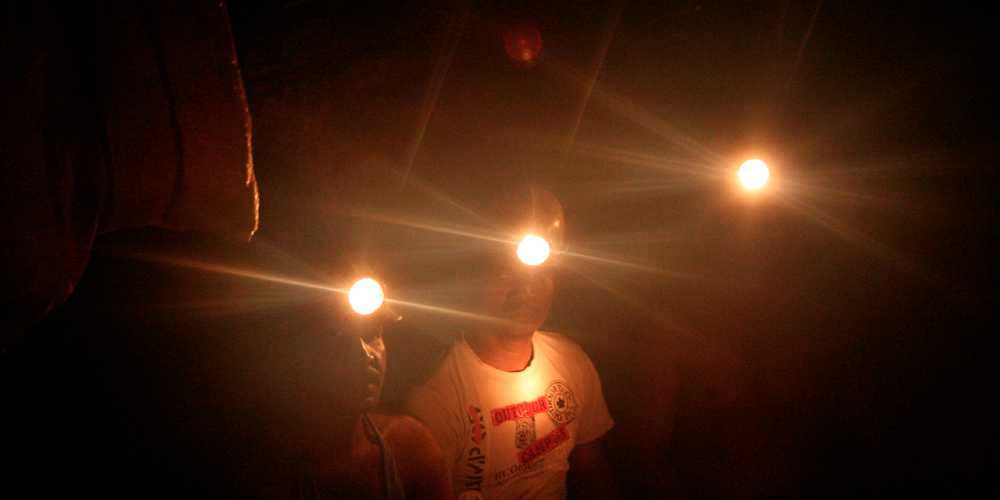ClimateWire/NYT, Feb 4, 2010
JHARIA, India — Night falls here by 5 p.m. and people stream into the open-air market to catch the latest political news. They have much to discuss, because elections are currently on in the state of Jharkhand, which is famous for three things: corruption, a home-grown terrorism threat called Naxalism, and this area’s economic life, which is marked in every imaginable way by coal.
Coal-fired electricity lights a single incandescent bulb in each shop, and the combined yellow glow gives the market a festive air. Underneath this town, the earth is burning. Suresh Kumar, 50, secretary of a local union, leaves the tea shop where he has his makeshift office and steers his motorbike down a road lined with dark piles of mining debris.
The light from his headlight is blocked by plumes of smelly, sulfurous smoke seeping out of the ground. He stops suddenly, seeing how close he has come to the edge of an open-pit mine. In the far distance, there is an orange glow in the sky. It is a non-natural sunshine reflecting the burning of millions of tons of prime coking coal. The underground fire has burned out of control for nearly a century.
Coal is the bane of Jharkhand, and the reason why Kumar and his fellow residents need to move out of the town. If the government has its way, 17 open-pit mining complexes will be built here. Below the town lie 19 seams of prime coking coal. The government’s goal is to get at the coal before the fire does.
There are many offshoots of this little drama that illustrate the high environmental and public health costs of extracting the biggest natural resource sustaining India’s economic boom.

